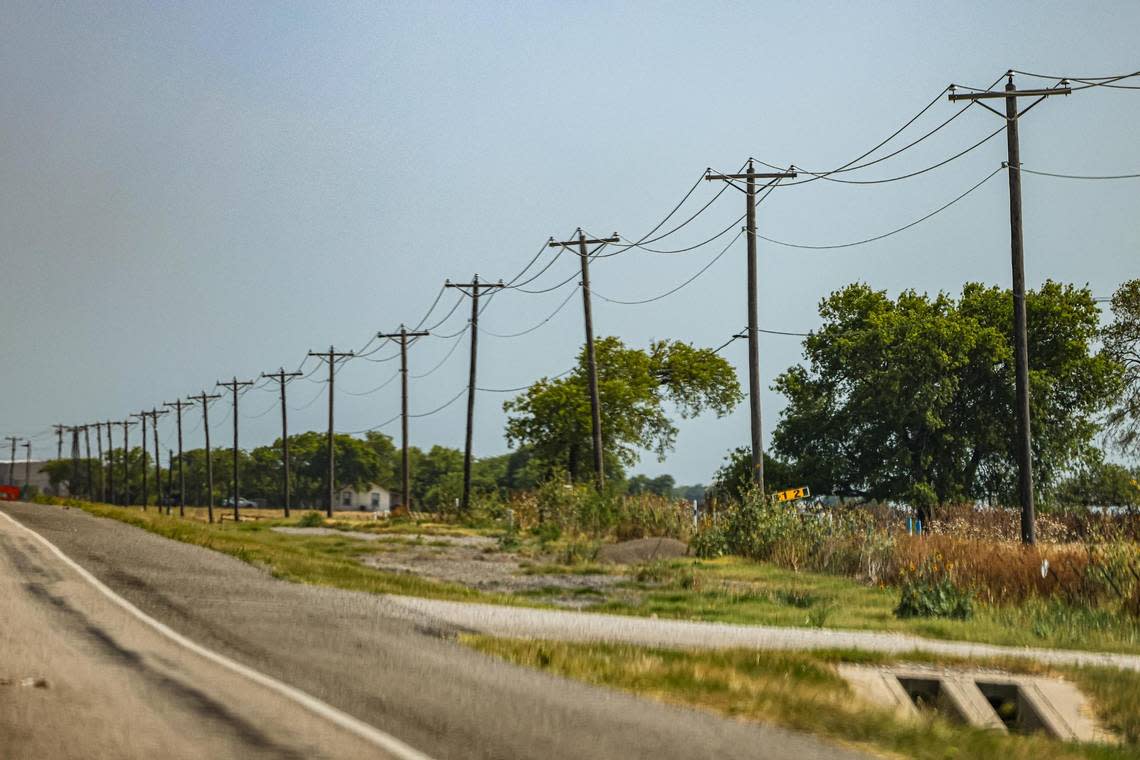Texas power grid ‘in better shape’ than last year. How likely are rolling blackouts?

In Reality Check stories, Star-Telegram journalists dig deeper into questions over facts, consequences and accountability. Read more. Story idea? RealityCheck@star-telegram.com.
As summer heats up and memories of last year’s streak of 105 degrees days come rushing back to North Texas residents, the idea of losing power in August may seem a bit frightening.
Fears of that possibility popped up after Texas’ power grid operator ERCOT warned in a report published last week that it may have to force rolling blackouts as energy demand rises in August.
ERCOT may need to order controlled outages during peak hours of energy consumption, which will be most likely at around 9 p.m. This, according to the report, is the time at which the power grid will be most vulnerable to low electricity generation from wind energy.
🚨 More top stories from our newsroom:
→ Woman stole mortuary van with body inside from JPS hospital ambulance bay
→ Will American Airlines flight attendants strike? What travelers should know
→ Fort Worth Botanic Garden denies group with event agenda including ‘War on White America’
[Get our breaking news alerts.]
ERCOT points to ‘worst case scenarios’ of electricity generation
Rolling blackouts are not completely out of the realm of possibility, but they are unlikely, according to energy and power grid experts. Still, ERCOT is erring on the safe side.
“They’re very conservative in terms of generation availability,” said Tom Seng, an assistant professor of professional practice in energy finance at TCU. “They look at worst case scenarios.”
When crunching the numbers for its Monthly Outlook for Resource Adequacy report, ERCOT lowers its projected output capacity by as much as 10% just to be on the safe side, he said.
Joshua Rhodes, a mechanical engineering researcher at UT Austin who focuses on the bulk energy system, agreed, saying that ERCOT has been “putting out more kind of extreme scenarios than they have in the past.”
So while he did not completely rule out the possibility of rolling blackouts come August, he did say that they are not as likely as some headlines might make them seem.
“I don’t think we’ll see blackouts this summer,” he said. “But there’s always a chance things could happen. If it’s much hotter for much longer than normal, and if we have a lot of power plants offline, then it’s possible to happen, but I don’t think it’s likely to happen.”
🔎 Here's what else we've Reality Checked:
→ Is AI 'manipulating' your thermostat?
→ Are American Airlines flight attendants really going to strike?
→ True or false: Snakes can swim up your toilet
Demand has indeed increased from previous years, but so has the grid’s readiness to deal with that demand, Seng said. This is thanks to the expansion of renewable energies like solar and wind.
“From the standpoint of resources, we’re in better shape than we were a year ago,” he said.
Do renewables put Texas’ electricity output at risk?
Marshall Watson, chair of the petroleum engineering department at Texas Tech University, said that renewables and the focus of government subsidies on them has caused coal and natural gas plants in West Texas to decrease production or stop functioning altogether.
He emphasized that his expertise lies in oil and gas production, and not power grid distribution, but said that this lack of incentive to expand dispatchable energy sources like coal and natural gas combined with capricious weather conditions could create an unreliable electricity supply situation once Texas moves into the less windy months of summer.
“I don’t care how much you build, if you don’t have any wind you’re not going to generate wind energy,” he said. “Our windy months are obviously March through June, and then late in the summer, early fall, it kind of dies off a little bit.”
Wind power accounted for around 3.4% of Texas’ total electricity generation on Wednesday, according to ERCOT’s Grid and Market Conditions dashboard. Solar accounted for 21%.
While it’s true that blustery spring days are about to be replaced by the sweltering and stagnant air of summer, there will be no lack of sunlight in the coming months, as Rhodes, of UT Austin, pointed out.
“The same sun that heats up buildings, that drives air conditioning use, that’s responsible for more than half of peak demand, is the same sun that makes electricity with solar panels,” he said. “We’re not going to have a fully cloudy, windless, 110-degree day across the state, because that’s not a physical possibility.”
Texans now depend on renewables in order to keep the A/C blowing, he added.
“ERCOT is reliant on renewables, we need renewables to show up at some level to be able to match supply and demand,” he said. “We can’t meet full peak demand with just coal, natural gas and nuclear or energy storage.”
The grid still needs dispatchable energy sources to make up for times when the wind isn’t blowing and after the sun goes down, but “that’s becoming less of an issue as we deploy more batteries,” Rhodes said.

